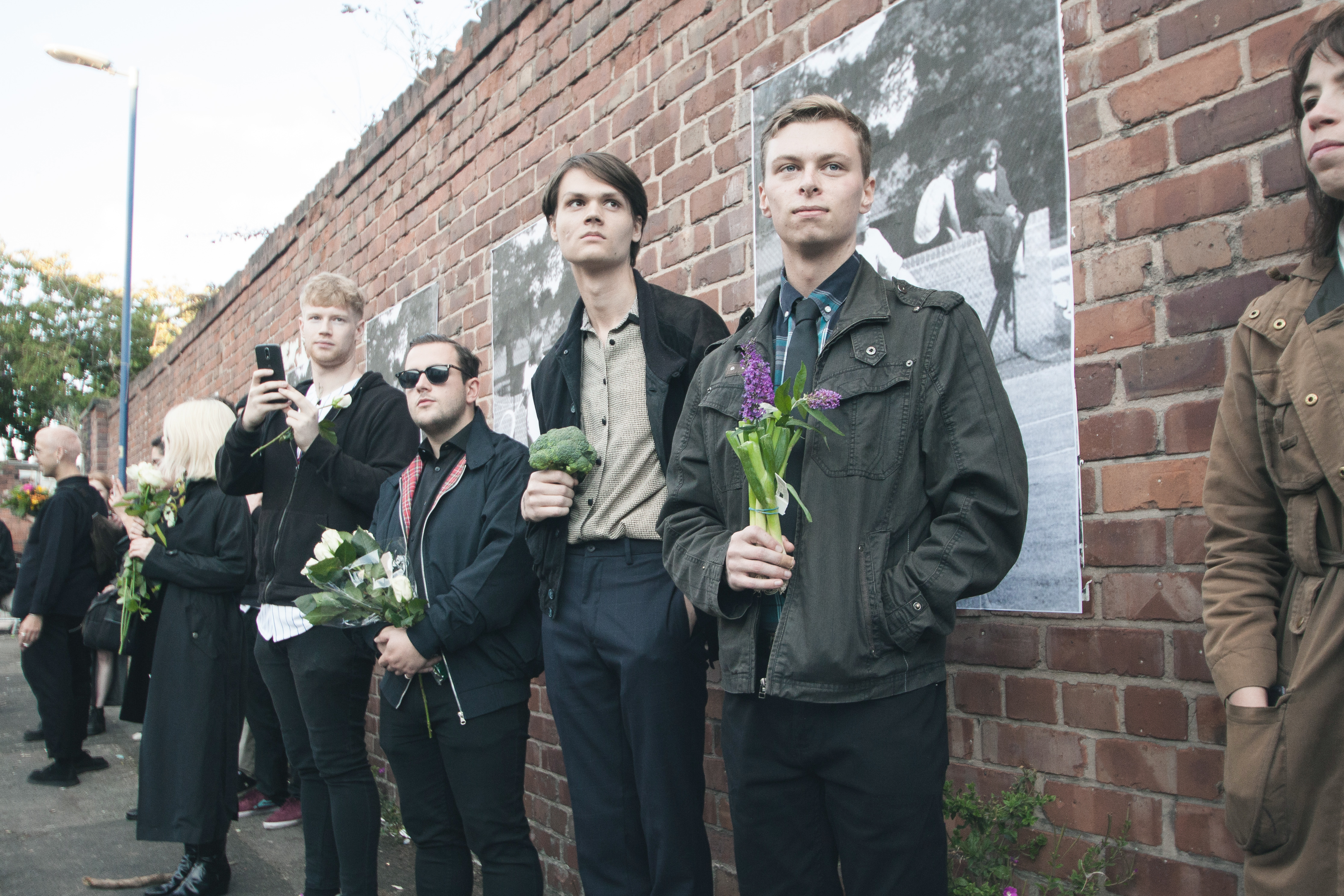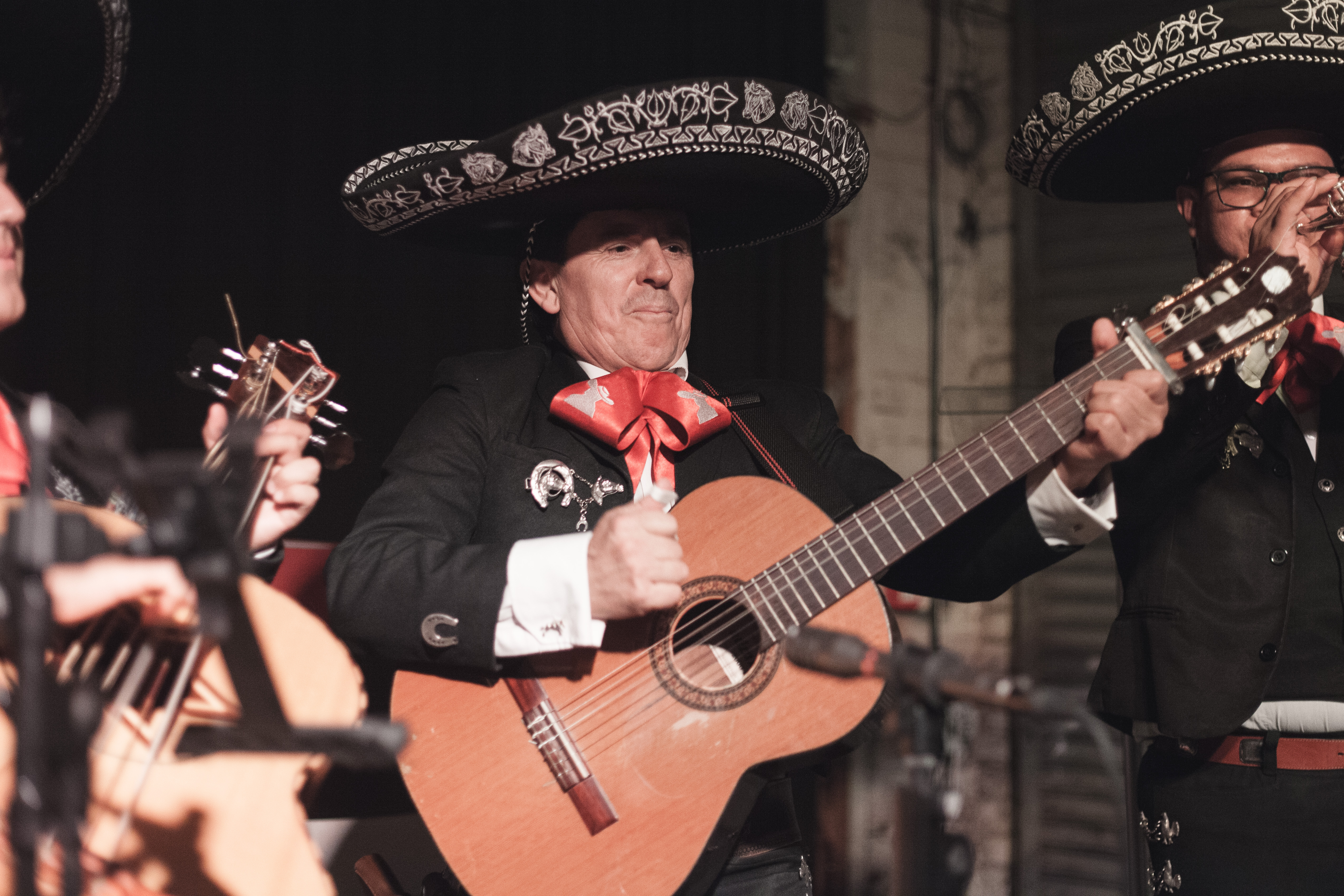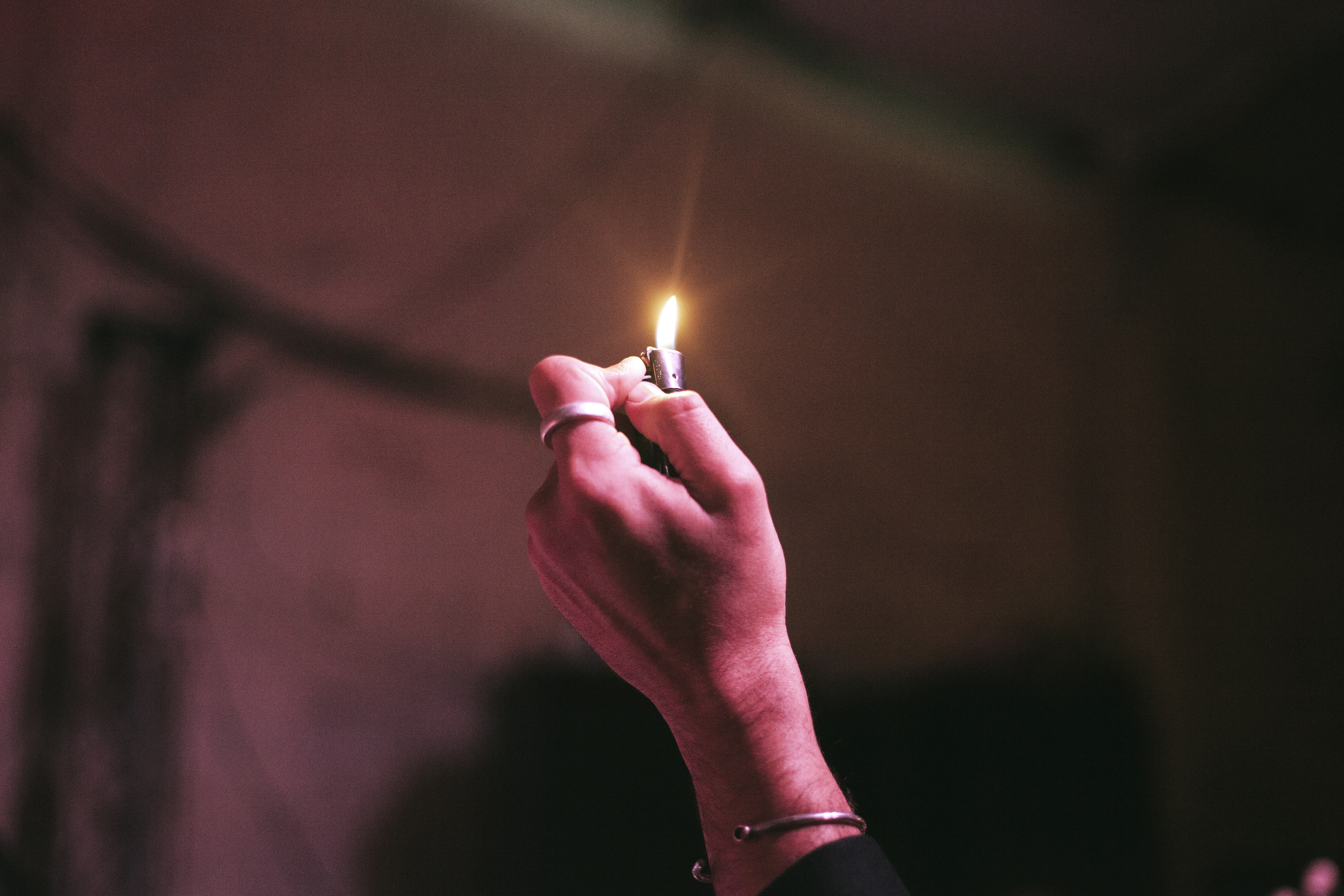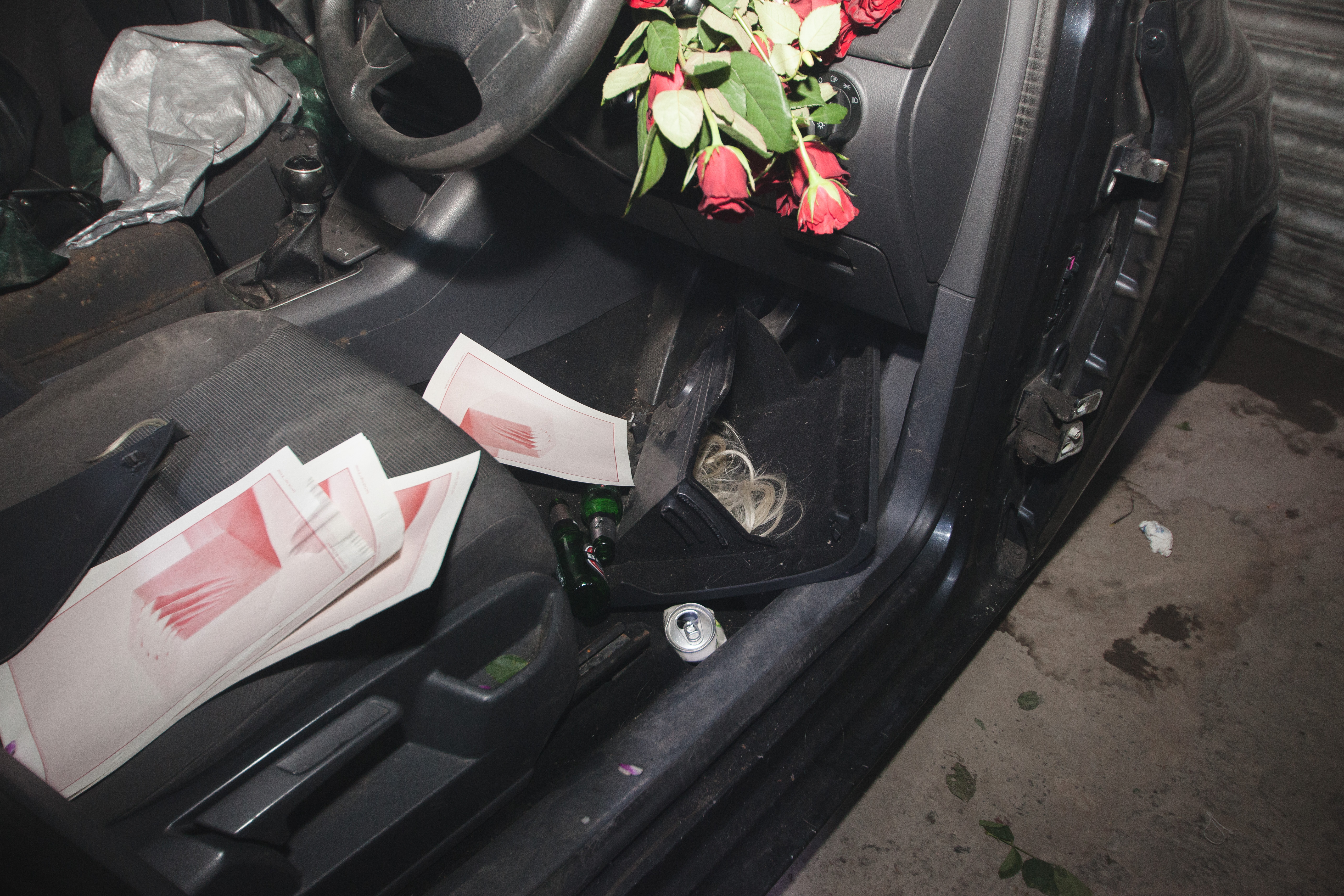A man wearing a studded dog collar, but otherwise dressed as a bishop, is observing the gathered crowd outside Salford venue The White Hotel, best known for both revitalising Manchester’s nightlife and for its close proximity to Strangeways.
On either side of the road, about 200 punters dressed in black are clutching supermarket flowers, while the venue staff are carrying a custom-built coffin from across the other side of the nearby dual carriageway. A woman wipes a fake tear from under her veil as a tabloid photographer takes her picture. Everyone is waiting for something to happen, Instagram Stories at the ready.
Videos by VICE
This is what the Daily Star dubbed the “sick and twisted” Funeral of Diana Princess of Wales, 2.0.

Twenty-one years have passed since a global audience of 2.5 billion watched the first funeral of Diana – one-time wife of heir to the British throne, Prince Charles; mother of princes William and Harry; pioneer of fashionable cycling shorts. Trailed by paparazzi, she died in a car crash, perishing alongside her boyfriend Dodi Fayed in a tunnel on the Alma Bridge in Paris. The funeral’s viewership was nearly three times more than the number that tuned in for Diana’s wedding to Charles 16 years earlier, which spoke volumes about the impact she made on people throughout her life in the spotlight.
Stripped of her HRH title after her 1996 divorce from Charles, Diana was known as “The People’s Princess”. Due to her difficult relationship with the Royal Family, who she accused of lack of support during Charles’ infidelities and her well-documented eating disorders, the avid AIDS and landmine campaigner was also embraced by queer communities. She continues to be celebrated as a symbol of endurance and tragedy – tropes familiar to LGBTQ folk.
But as Dr Michael Bronski, a Harvard University professor and the author of books on queer history and gay culture, asserts in a recent article on the dark side of stanning, “There is a long history of gay male fan culture latching onto famous women and then turning on them. Queens would come to a Judy Garland concert and then scream at her when she was too drunk to finish it. The women have changed – it’s no longer Marlene Dietrich and Judy Garland. But the dynamic remains in western culture.”
And so, it’s difficult not to suspect some attending The White Hotel’s reenactment of Diana’s funeral of underlying misogyny.



The White Hotel director Ben Ward explains that the evening’s exercise, which isn’t branded as a queer event, is – in the organisers’ view – a celebration of Diana’s achievement in shaking up the establishment.
“She might have almost broken the monarchy, she was that close,” he surmises – and the free event (“When have you ever paid to attend a funeral?” asks the press release) is a response to “a year of ridiculous patriotism, of all those people who lined up for the royal wedding [of Prince Harry and Meghan Markle]”. He continues, “It was a global phenomenon, a brilliant PR stunt, and now that everybody loves the royals again, it’s put [the abolishment of the royal family] back for the next thousand years.”
Ward asserts that this kind of patriotism chooses to ignore that “the reality is there’s something else darker under the surface”, hinted at by the DJ and radio personality, and posthumously outed paedophile, Jimmy Savile’s inclusion on the event’s promotional artwork, which Ward explains is used to draw attention to Savile’s close links with the royal family and thus “to give an indication of what really is lying underneath”.



Following the procession, which begins at 6.30PM sharp, no photographs are permitted inside the warehouse space whose centrepiece is a real crashed car, replete with a lock of Diana-like blonde hair, which is covered with flowers. The coffin is laid on the stage, where a cast of actors about to play people such as Diana’s brother Earl Spencer and former British prime minister Tony Blair sit stoically, awaiting the start of the word-for-word reenactment. The programme promises the only modification to be the inclusion of a live Mexican mariachi band, advertised as performing a new arrangement of Elton John’s “Candle in the Wind”.
As the eulogies begin and the crowd replace “Amen” with “ramen” it becomes apparent that, rather than following in the tradition of historical reenactments, the event owes more to the Theatre of the Absurd – a tradition dating back to the 1950s in which comedy and tragedy coincided with nonsensical narrative and dialogue. The Situationist International also come to mind, an organisation of social revolutionaries whose advanced capitalism-critiquing Happenings were an inspiration for famed Manchester nightclub The Hacienda, from whom The White Hotel have picked up the baton as the city’s most exciting event space.



Although the audience seem engaged throughout – no mean feat for a standing performance that lasts nearly two hours – the biggest cheers are reserved for the mariachi band, who while visibly enjoying the audience’s enthusiasm, look somewhat confused between numbers. But the surprise standout performance is a painstakingly crafted impersonation of Tony Blair, who is continuously heckled by the audience, with one reveller shouting “nice one for the university fees” – a reminder that, under Blair’s Labour government, tuition fees were introduced across the UK in 1998.
While event creator Stanley Schtinter and The White Hotel creative director Austin Collings read out some of the funeral’s passages, a recording of Diana’s brother’s most impassioned speech – where he criticised the press and referred to the Spencers as Diana’s “blood family”, thus throwing shade at the royals – is played through big monitor speakers. The previously rowdy crowd go quiet, and the rare moment of respectful silence from both performers and audience comes as welcome sincerity for those who arrived somewhat uncomfortable with the premise of the event.
“I had a bit of a misgiving about it, because men glorifying women’s death feels a bit ‘urgh’, but when they played the clip of Earl Spencer, that’s when I felt moved – it felt less cynical,” says attendee Claudia Saviotti.

The reenactment concludes with the shooting of a blonde woman previously sitting left of stage. Without seeing the event artwork, it would make sense to assume this is the organisers’ final verdict on Diana’s conspiracy theory-riddled death – that, rather than perishing in a tragic accident, she was murdered by the establishment. But the truth of the performance’s climax is more complicated. The actor who falls to the ground is supposed to be murdered journalist and Crimewatch presenter Jill Dando. “That’s a murder that’s unresolved,” explains Ward afterwards. Indeed, while a man named Barry George was sentenced for the killing, he was later acquitted. “We reenacted the idea of what the state did, which was to put him away, as they needed someone [to blame].”
The loose coalescing of anti-establishment narratives is lost on some attendees. “I was hoping for a spectacle, a ghoulish cabaret,” says Olivia Dee afterwards. “Instead, the night offered a gauche example of performance art. The concept had so many possibilities, so few of them realised.” But most people I talk to are very stimulated by what just happened, while perhaps some of their responses aren’t quite the anti-patriotism the organisers were hoping for. “It’s really funny how it sort of turned into a pantomime, which is a really classic British thing, and it’s really nice being in the atmosphere of recreating something that we weren’t there for,” sums up Marcus Clarke.



Whether the reenactment has truly galvanised the Manchester audience towards a longer term commitment to anti-establishment activity remains to be seen. Maybe the biggest shock and main takeaway is rather that, on a weeknight, The White Hotel managed to attract a 200-strong audience – a great achievement given the current state of British nightlife. The revellers not only showed up wearing the requested colour and came bearing flowers, but gave up a sunny September evening to pack themselves inside the out-of-the-way venue, staying long into the night.
The buzz before the unusual event, which for me artfully veered between a theatrical take on ruin porn and a sincere, heartfelt tribute, drew comparisons to the seminal (but under-attended) 1976 Manchester Sex Pistols gig at The Lesser Free Trade Hall, which inspired Joy Division and New Order’s Peter Hook and Bernard Sumner. “It was more like Oasis playing Knebworth,” Ward deadpans.
As for what Princess Diana would have made of it? Candice Davies, who told me she attended The White Hotel gig because of her “genuinely developed love for Diana”, the event was the kind of respectful homage the tragic heroine would have wanted: “I feel Diana wouldn’t be too phased by this affair, she’d probably just be happy The People’s Princess got the people’s funeral.”
All photos by George Heaton.




